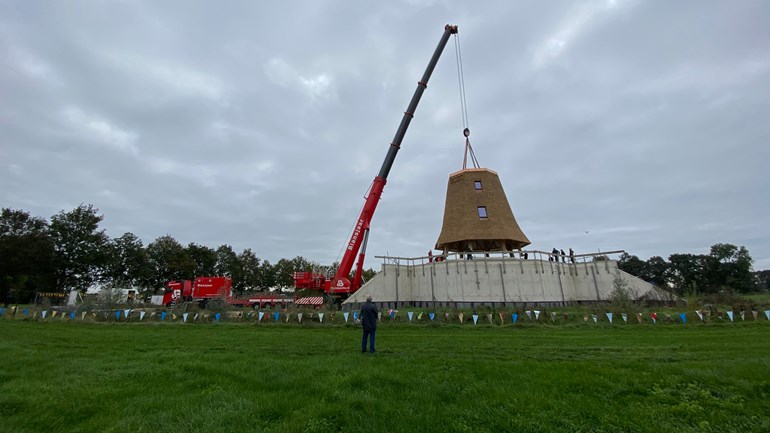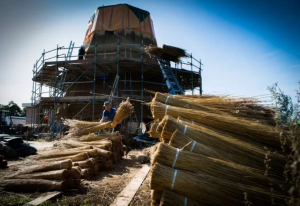Contact
Spanbroekerweg 162
1715 GV Spanbroek
The Netherlands
+31 226 425 150
info@windenergysolutions.nl

In this blog, I will take you along in one of our unique windmill projects. A special project that is being realized in Wesepe, The Netherlands. After 75 years of absence, Wesepe gets another iconic traditional windmill. A traditional mill on the outside, an exceptional piece of technology on the inside. A project in which WES does the engineering for the control works that is specific for this mill… I will explain what we will do, but first a bit of history.
The traditional grain mill, built in 1837, lost its blades in 1938 after 100 years of operation. The octagonal grain mill had an upper wheel. A turning system was needed to turn the blades into the wind, so that it could make optimal use of this and function as a grain mill. After 100 years of operation, the mill lost its purpose, and 7 years later it disappeared completely from Wesepe’s horizon.
At the end of the Second World War, the day before the liberation of Wesepe, the occupiers ordered the miller to set fire to the mill. The miller could not bear this. Given the severe sanction, whether the mill or the miller, his brother-in-law was compelled to do it, so the mill was completely burnt.
Mr. Henry Franken, resident of Wesepe, is passionate about historic buildings. Combined with the inhabitants’ desire to get a mill in the village again, the initiative has grown. A long journey of design, ideas and permits followed. Now, it is time to build the new, both traditional and innovative, windmill.

Now, the new windmill is being rebuild. An octagonal, four-winged mill is built according to the earlier, traditional design. Unlike its ancestor, this mill will not fulfill the traditional function as a grain mill.
This 4-winged thatched windmill will have a double function in the future. In the first place, both the mill and the concrete substructure will have a residential function, and secondly the generation of energy. Like the great cousins of this mill, the movement of the blades set in motion by the wind is converted into energy.
Quote from Mr. Franken: “I did not want to build a monument that deteriorates when I am no longer here. There is a revenue model behind it. The mill will soon generate electricity for about twenty households. A modern windmill system will be installed in the ridge. My house will be built in the mill and five more apartments, so-called “field rooms”, will be built under the mill. Those field rooms are rented out. I will live with my wife in the large house in the mill.”
At present, WES and Vaags have started an engineering process to investigate which control system will be best applicable in the authentic windmill. We will share with you how these steps proceed and what comes next.
The mill is planned to be operational in 2021. Follow our socials, we will keep you informed!
Spanbroekerweg 162
1715 GV Spanbroek
The Netherlands
+31 226 425 150
info@windenergysolutions.nl
